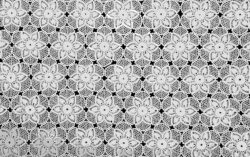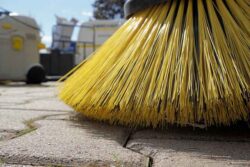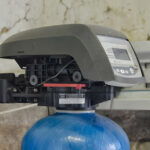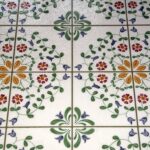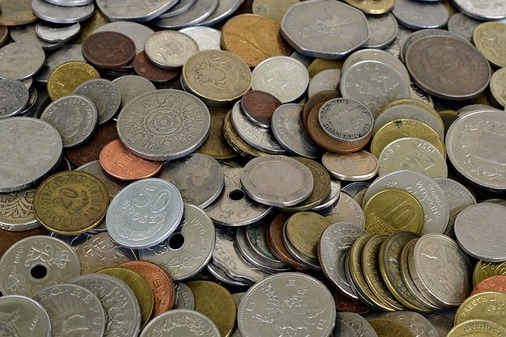
Collectible coins and currency are not just pieces of metal or paper; they are fragments of history and art. Proper cleaning and maintenance are paramount to preserving their value and aesthetic appeal. In this comprehensive guide, we will delve into the world of numismatics, exploring simple yet effective tips for cleaning and maintaining collectible coins and currency.
Collectible coins and currency often carry historical significance. Understanding the context of a particular coin or note enhances appreciation and influences cleaning decisions. Coins and currency are graded based on their condition. Cleaning can affect this grading, and improper cleaning may diminish the value. Careful consideration is vital. Let’s embark on a journey to safeguard these treasures for generations to come.
Here is our post on A Comprehensive Guide on How to Clean and Maintain Collectibles which you will not want to miss.
Cleaning Collectible Coins
1. Handle with Care
Always handle collectible coins with clean, dry hands. Touching them with bare hands can transfer oils and contaminants, impacting their appearance.
2. Avoid Cleaning if Unnecessary
If a coin’s patina or toning adds to its appeal, avoid cleaning. Some collectors prefer the natural aging process, considering it a part of the coin’s character.
3. Gentle Cleaning Methods
For coins that require cleaning:
- Warm Water Bath: Soak coins in lukewarm distilled water with a mild soap. Gently brush with a soft toothbrush, focusing on intricate details.
- Isopropyl Alcohol: Dampen a soft cloth with isopropyl alcohol to gently clean the surface. Pat dry immediately.
- Acetone: Use acetone for stubborn residues. Ensure it is 100% pure and applied with extreme caution.
4. Avoid Harsh Cleaning Agents
Never use abrasive materials, harsh chemicals, or commercial jewelry cleaners. These can cause irreparable damage and negatively impact the coin’s value.
Maintaining Collectible Coins
1. Storage Solutions
- Coin Holders: Store individual coins in holders made of inert materials like Mylar or PVC-free plastics.
- Albums and Folders: Use coin albums or folders for organizing and protecting multiple coins. Ensure they are made of archival-quality materials.
2. Avoid Exposure to Elements
- Direct Sunlight: Keep coins away from direct sunlight to prevent fading.
- Humidity Control: Store coins in a controlled environment to avoid humidity-induced damage.
3. Handle with Cotton Gloves
When handling coins outside of protective holders, wear cotton gloves. This prevents oils and contaminants from your skin affecting the coin’s surface.
4. Regular Inspection
Regularly inspect your coin collection for signs of tarnish, discoloration, or any other issues. Early detection allows for timely intervention.
See also our post on A Comprehensive Guide on How to Clean and Care for Your Beloved Shoes and Boots
Cleaning Collectible Currency
1. Handle with Gloves
Wear cotton gloves when handling collectible currency to prevent oils and acids from your skin affecting the paper.
2. Avoid Cleaning Interventions
- Pristine Condition: If the currency is in pristine condition, avoid cleaning. Some collectors prefer preserving the original state.
- Professional Assessment: Seek professional advice before attempting to clean rare or valuable banknotes.
3. Gentle Cleaning Techniques
For banknotes that require cleaning:
- Compressed Air: Use a can of compressed air to remove loose dirt or debris.
- Soft Brush: Gently brush the surface with a soft artist’s brush to remove dust.
4. Avoid Moisture Exposure
Keep banknotes away from moisture, as it can cause wrinkling, staining, and mold growth.
Maintaining Collectible Currency
1. Storage Solutions
- Acid-Free Holders: Use acid-free holders made of materials like Mylar or archival-quality plastics.
- Albums and Portfolios: Store banknotes in albums or portfolios designed for currency preservation.
2. Temperature and Humidity Control
Maintain a stable environment with controlled temperature and humidity to prevent damage from fluctuations.
3. Avoid Direct Light
Store banknotes away from direct light, as it can cause fading and discoloration.
4. Regular Inspection
Regularly inspect banknotes for signs of deterioration. Address any issues promptly to prevent further damage.
See also our post on A Comprehensive Guide on How to Clean and Restore Antique Jewelry
Additional Tips for Numismatic Care
1. Insurance
Consider insuring your collection, especially if it holds significant monetary or sentimental value. Insurance provides financial protection in case of loss or damage.
2. Document Your Collection
Keep a detailed inventory of your collection, including descriptions, grades, and any relevant historical information. This documentation aids in valuation and can be useful for insurance claims.
See also our post on A Comprehensive Guide on How to Clean and Preserve Antique Photographs which you will not want to miss.
Conclusion
In concluding this comprehensive guide on cleaning and maintaining collectible coins and currency, let’s distill the essence of preserving these cherished artifacts. Navigating the world of numismatics demands a delicate balance between respecting the historical value of each piece and ensuring its longevity through proper care.
By understanding the materials, embracing gentle cleaning techniques, and adopting meticulous storage practices, you embark on a journey of preserving not just coins and banknotes but fragments of history and art. Remember, the stories these collectibles carry are not just in the engravings or inscriptions; they are etched in the patina and texture of each coin, and the delicate fibers of every banknote.
